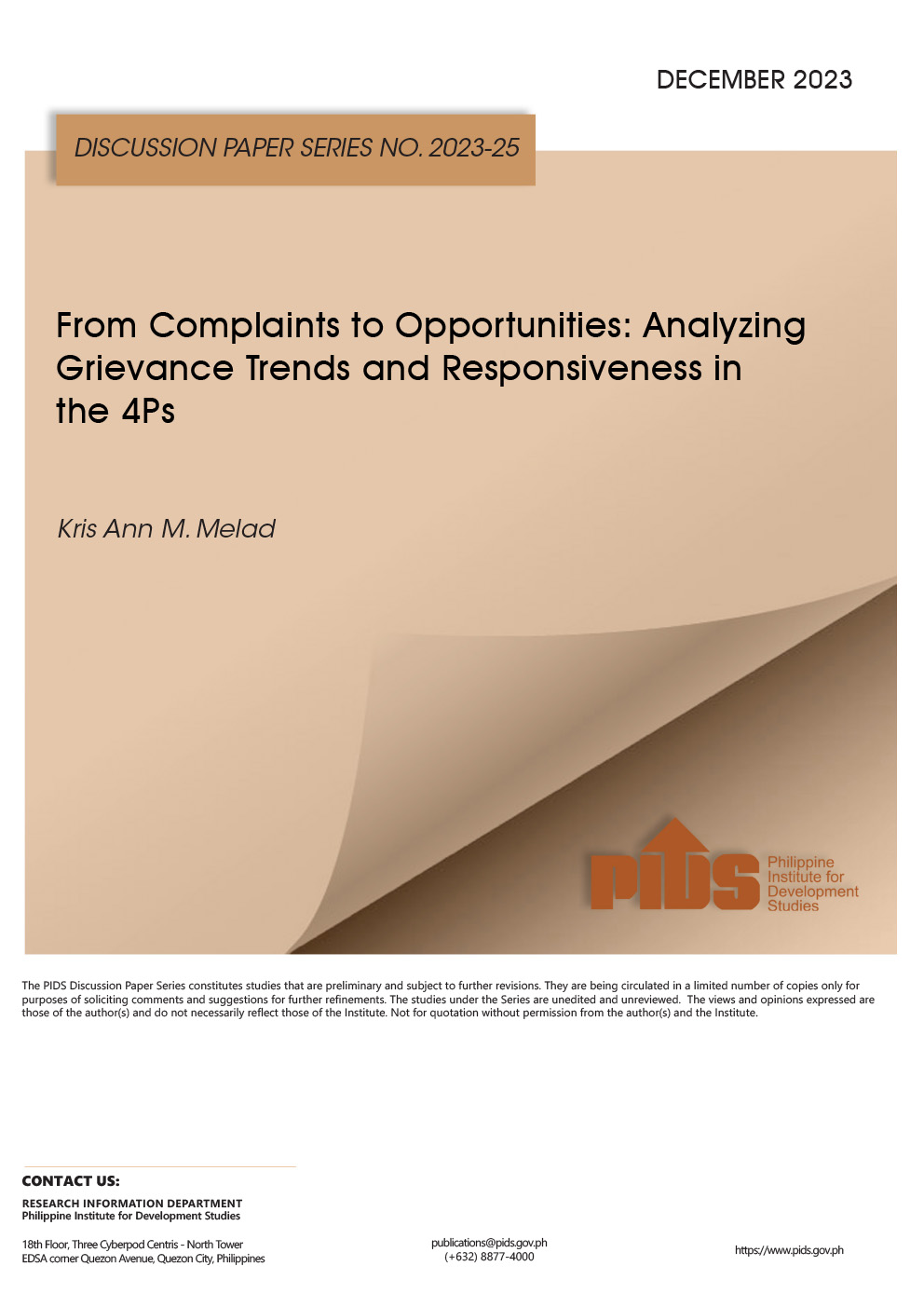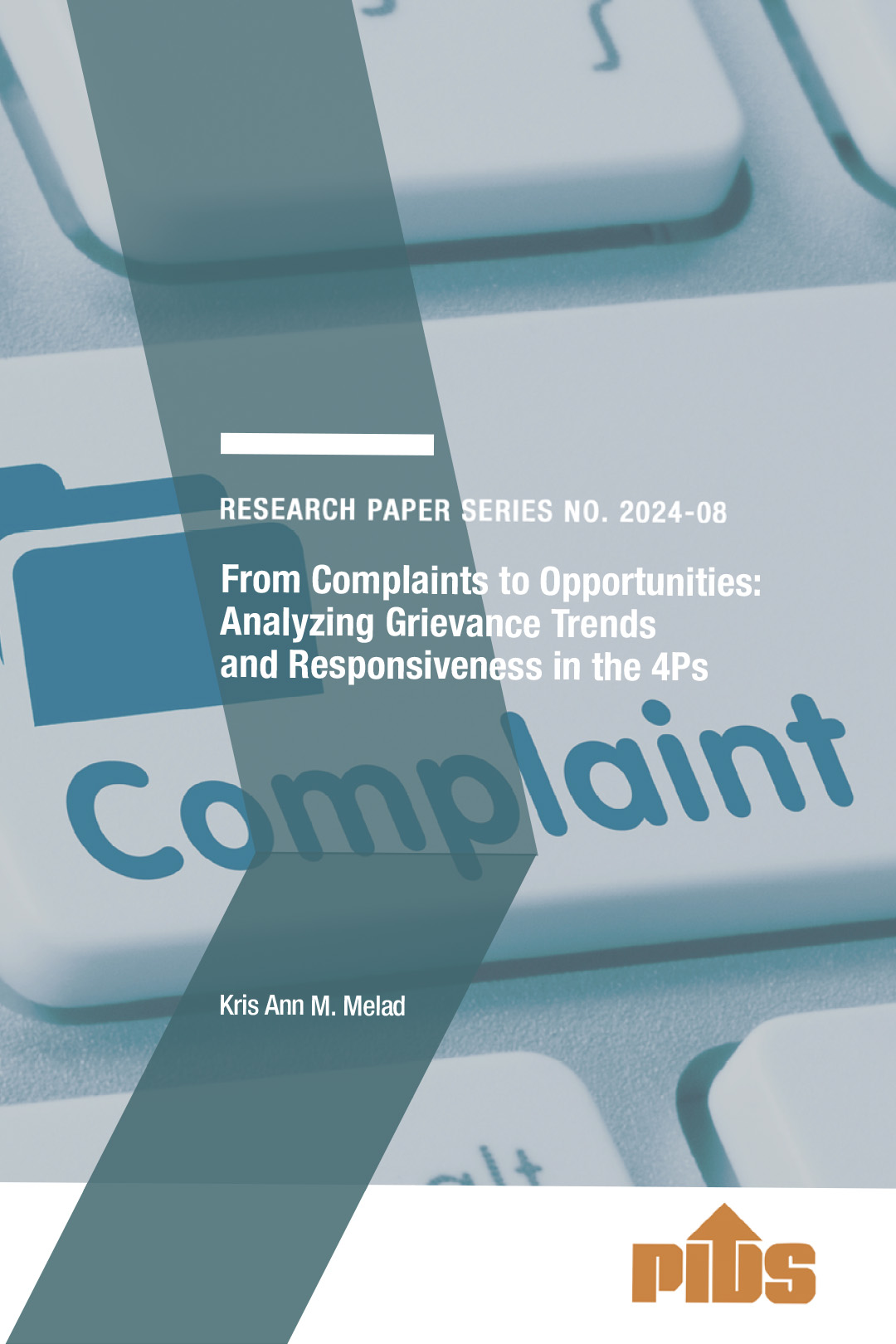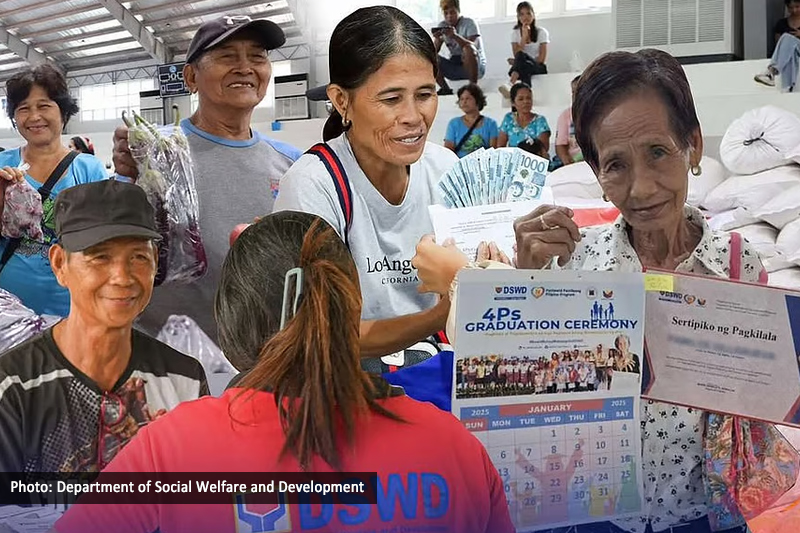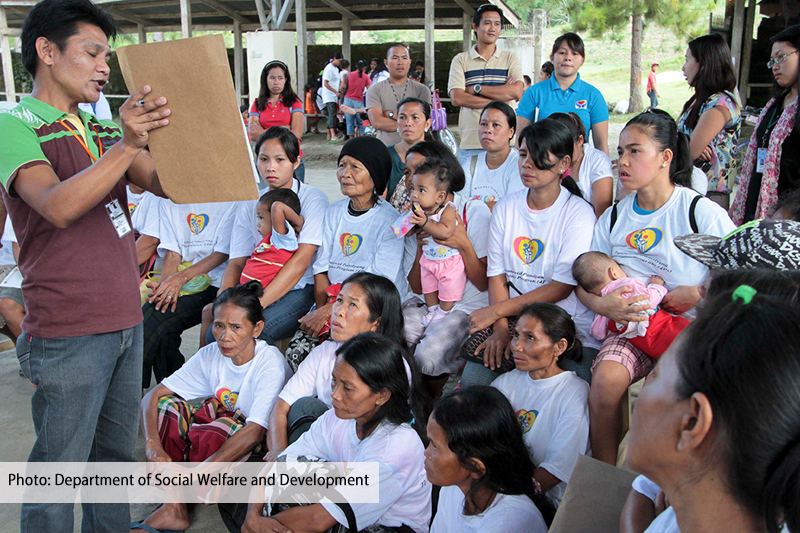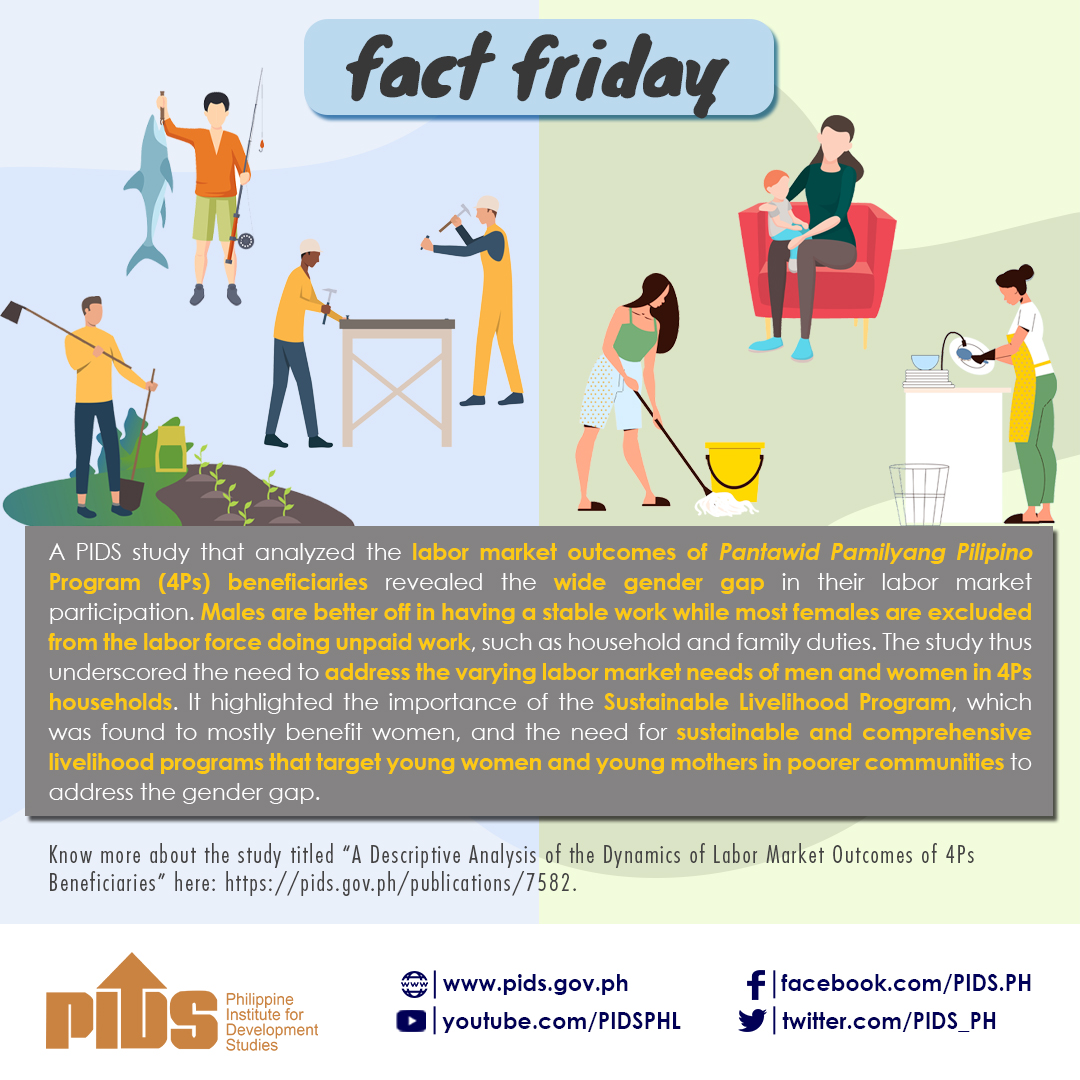DSWD`s Pantawid Pamilyang Pilipino program or 4Ps must provide longer assistance to its present beneficiaries instead of increasing the number of its beneficiary families.
A recent study of PIDS Senior Research Fellow Celia Reyes and Supervising Research Specialist Aubrey Tabuga recommends the extension of 4Ps assistance to current beneficiary families to ensure that their children can finish high school. If this happens, they will have more employment opportunities when they enter the labor market.
The Philippine conditional cash transfer program targets extremely poor families and provides PHP300 a month for every child in each family. A maximum of three children can benefit under the program, or PHP3,000 for a school year (i.e., 10 months) for meeting educational expenses. There is also a health component that allots PHP6,000 annually for each family or PHP500 per month.
Targeted children are those aged up to 14 years old. The maximum period of assistance is five years. For example, a poor family with a three-year-old child can only be assisted up until he or she turns eight. On the other hand, one that has only a 12-year-old adolescent can only be assisted for two years.
The study notes that returns on educational investment vary in different levels of educational attainment. High school graduates can earn as much as PHP246 a day, which is 40 percent higher than the PHP186 average daily wage of elementary graduates. The study therefore deems it favorable to extend the coverage to up to 16-18 years of age to enable the 4Ps children to finish high school and to increase the period of coverage from 5 to 10 years or even longer. Enabling the children to finish high school poses more benefits. This would likely boost their wages when they enter the labor market and eventually increase the chance of breaking intergenerational poverty as it will increase investments in human capital.
Extending the period of assistance would also be complementary to the recently adopted K 12 program (kindergarten, six years of primary education, four years of Junior High School, and two years of Senior High School). This would enable the 4Ps children to complete the 12 years of primary and secondary schools by the time they reach 18 years old.
For more information, you may check the full study from these links: http://dirp4.pids.gov.ph/ris/books/pidsepm2012_v3.pdf; http://dirp4.pids.gov.ph/ris/pn/pidspn1302.pdf.
A recent study of PIDS Senior Research Fellow Celia Reyes and Supervising Research Specialist Aubrey Tabuga recommends the extension of 4Ps assistance to current beneficiary families to ensure that their children can finish high school. If this happens, they will have more employment opportunities when they enter the labor market.
The Philippine conditional cash transfer program targets extremely poor families and provides PHP300 a month for every child in each family. A maximum of three children can benefit under the program, or PHP3,000 for a school year (i.e., 10 months) for meeting educational expenses. There is also a health component that allots PHP6,000 annually for each family or PHP500 per month.
Targeted children are those aged up to 14 years old. The maximum period of assistance is five years. For example, a poor family with a three-year-old child can only be assisted up until he or she turns eight. On the other hand, one that has only a 12-year-old adolescent can only be assisted for two years.
The study notes that returns on educational investment vary in different levels of educational attainment. High school graduates can earn as much as PHP246 a day, which is 40 percent higher than the PHP186 average daily wage of elementary graduates. The study therefore deems it favorable to extend the coverage to up to 16-18 years of age to enable the 4Ps children to finish high school and to increase the period of coverage from 5 to 10 years or even longer. Enabling the children to finish high school poses more benefits. This would likely boost their wages when they enter the labor market and eventually increase the chance of breaking intergenerational poverty as it will increase investments in human capital.
Extending the period of assistance would also be complementary to the recently adopted K 12 program (kindergarten, six years of primary education, four years of Junior High School, and two years of Senior High School). This would enable the 4Ps children to complete the 12 years of primary and secondary schools by the time they reach 18 years old.
For more information, you may check the full study from these links: http://dirp4.pids.gov.ph/ris/books/pidsepm2012_v3.pdf; http://dirp4.pids.gov.ph/ris/pn/pidspn1302.pdf.

